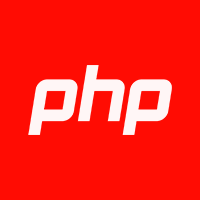-

- 如何使用容器技术统一PHP环境 本地与生产环境无缝衔接
- 使用容器技术(如Docker)能彻底解决PHP项目在不同环境间因差异导致的问题。其核心在于将应用及其所有依赖封装在独立可移植的单元中,确保环境一致。具体步骤包括:1.定义Dockerfile作为镜像蓝图,指定基础镜像、安装扩展、复制代码等;2.配置Web服务器容器并实现职责分离;3.使用docker-compose.yml编排多服务,定义各容器及其网络连接;4.本地开发时挂载卷以提升效率;5.利用环境变量管理不同配置;6.生产部署时通过CI/CD流程构建镜像并借助编排工具管理容器。传统环境配置因
- 运维 . kubernetes 955 2025-07-18 16:39:01
-

- 如何用容器网络配置实现PHP环境一致 本地与生产容器服务连通
- 要实现PHP环境一致性并打通本地与生产环境的容器服务连通,核心在于使用Docker自定义网络、统一镜像构建与服务发现机制。首先,通过统一Dockerfile构建镜像并锁定版本,确保PHP版本、扩展和依赖一致;其次,使用自定义网络(如my_app_network),使容器通过服务名互相通信,模拟生产环境的服务发现;第三,在docker-compose.yml中定义网络拓扑,统一环境变量配置,确保本地与生产环境行为一致;最后,利用环境变量注入配置,结合CI/CD流程,实现高效、安全、可维护的容器化P
- 运维 . kubernetes 229 2025-07-18 15:50:02
-

- 告别传统服务器部署的烦恼:如何用Composer和GoogleCloudFunctionsFramework轻松构建PHP无服务函数
- 你是否也曾为了一个小小的API接口、一个简单的Webhook监听,或是某个后台异步任务,而不得不费尽心思地搭建一整套Web服务器环境?从Nginx/Apache配置到PHP-FPM,再到框架的初始化、路由定义,每一步都显得有些“重”。在追求轻量、高效的现代开发模式下,这种传统方式无疑增加了不必要的负担。本文将介绍如何利用Composer和GoogleCloudFunctionsFrameworkforPHP,彻底摆脱这些束缚,轻松步入无服务(Serverless)的世界。
- 运维 . kubernetes 991 2025-07-18 15:10:29
-

- 如何使用Kubeflow构建云原生异常检测平台?
- Kubeflow能帮你搭建云原生的异常检测平台,它提供了一套完整的工具链,涵盖数据预处理、模型训练、评估、服务等环节。1.数据准备与预处理:通过KubeflowPipelines将数据清洗、特征工程封装成组件,并使用ApacheBeam处理大规模数据;2.模型训练:利用KubeflowTrainingOperator支持TensorFlow、PyTorch等框架,可选用自编码器、IsolationForest、One-ClassSVM等模型;3.模型评估:通过编写评估脚本集成到Pipeline中
- 运维 . kubernetes 392 2025-07-18 15:00:02
-

- Golang如何实现BFF模式 为不同客户端定制后端聚合服务
- Golang实现BFF模式具有并发能力强、性能优异、简洁易维护等独特优势。其一,Go的Goroutine和Channel机制支持高效的并发调用,便于BFF聚合多个微服务数据;其二,作为编译型语言,Go执行效率高、内存占用低,适合高性能场景;其三,Go语言设计简洁,标准库强大,利于团队协作与快速迭代;其四,Go具备快速编译和丰富工具链,提升开发部署效率。
- 运维 . kubernetes 1017 2025-07-18 12:15:02
-

- 记一次内部分享——瞎扯淡
- 大家好,我是乔克。今天给大家分享的主题是《闲聊Docker》。大家工作都很忙,但也要劳逸结合,所以这次分享是“忙里偷闲”的“闲聊”,只动嘴不动手,不会涉及实际操作和如何构建镜像、运行容器等内容,我是一个“纯粹”的人。整个PPT非常简洁,主要是图片和流程图,我会根据这些图来进行分享,想到哪里就说到哪里,有时候可能啰嗦,有时候可能有些跑题,在分享过程中如果有错误的地方,大家可以记下来,分享结束后我们再讨论。现在进入正题,整个分享分为以下五个部分。第一部分是让大家感受Docker的魅力。第二部分分享D
- 运维 . kubernetes 719 2025-07-18 10:16:17
-

- Golang在DevOps流水线中的角色 分析编译速度与部署效率优势
- Golang在DevOps流水线中广泛应用,主要因其能高效解决实际问题。1.快速编译:Go几乎“秒级”完成编译,显著减少CI流程中的构建等待时间;2.静态类型与简洁语法设计提升编译效率;3.GoModules优化依赖管理,减少网络请求;4.单文件输出简化链接过程,加快流水线响应;5.静态编译生成无依赖二进制文件,部署更高效;6.支持交叉编译,便于多平台统一部署;7.构建的Docker镜像轻量,提升Kubernetes滚动更新效率;8.内置测试工具和代码格式化检查机制,易于集成CI/CD工具链;9
- 运维 . kubernetes 343 2025-07-18 09:30:03
-

- Golang构建轻量级Operator的最佳实践 分享kubebuilder框架使用心得
- 使用Kubebuilder构建Operator时,初始化项目需规划目录结构;利用注解生成代码提升规范性与效率;调试部署应区分本地与集群环境;日志监控不可忽视。具体建议如下:1.初始化项目时手动拆分模块如pkg/controller、pkg/api、pkg/util提高可维护性;2.使用Kubebuilder注解生成CRD和控制器代码减少错误并保持一致性;3.调试阶段用makerun配合kubeconfig观察资源变化部署时打包镜像并检查配置;4.关键流程添加详细日志接入zap等库便于排查问题并考
- 运维 . kubernetes 595 2025-07-18 08:44:01
-

- centos k8s部署常见问题及解决
- 在CentOS系统上部署Kubernetes(k8s)过程中,可能会遇到一系列常见问题。以下是这些问题的具体表现及对应的解决策略:1.网络配置异常现象:Pod间通信失败,或无法访问外部网络。解决方案:确认CNI插件是否已正确安装并完成配置。检查kubelet和kube-proxy服务的运行状态。审核防火墙规则,确保关键端口(如6443、10250、10251等)处于开放状态。2.节点无法加入集群现象:新节点无法正常加入到现有的Kubernetes集群中。解决方案:核对kubelet配置文件中的-
- 运维 . kubernetes 904 2025-07-18 08:38:35
-

- 如何将PHP容器部署到Kubernetes PHP环境K8s集群运行配置基础
- 1.容器化PHP应用:使用Dockerfile构建包含PHP-FPM的镜像,安装必要依赖并复制代码和配置文件。2.编写Kubernetes资源清单:创建Deployment定义容器镜像、端口、资源限制及健康检查;创建Service实现内部访问;可选Ingress暴露外部访问。3.管理配置与敏感数据:通过ConfigMap存储非敏感配置,如环境变量和PHP配置文件;通过Secret以Base64编码方式保存敏感信息如数据库密码。4.部署到K8s集群:使用kubectlapply命令将YAML文件部
- 运维 . kubernetes 821 2025-07-17 20:40:03
-

- 如何让PHP环境配置在本地和生产同步 PHP.ini配置一致化操作
- 直接复制php.ini文件不是保持PHP环境配置同步的最佳实践,核心在于建立智能配置管理机制。首先,应维护一个基准php.ini模板,纳入版本控制系统,包含通用设置如错误报告、内存限制、扩展启用等。其次,差异配置应通过环境变量或独立配置文件管理,如数据库连接、日志路径、Xdebug启用等,避免硬编码。最后,使用自动化部署工具如Docker、Ansible等,确保环境变量或配置片段正确注入,减少人为错误。容器化技术可将配置作为镜像一部分或通过卷挂载实现一致性,同时利用环境变量动态调整部分设置。敏感
- 运维 . kubernetes 613 2025-07-17 18:30:03
-

- 如何用Docker部署WordPress PHP项目 PHP博客系统容器搭建步骤
- 使用Docker部署WordPress的解决方案是通过DockerCompose定义并运行多个容器,具体步骤包括:1.安装Docker和DockerCompose;2.创建项目目录并编写docker-compose.yml文件,定义WordPress服务和MySQL数据库服务;3.启动容器并访问WordPress完成安装;4.通过docker-composedown命令停止或删除环境。常见配置陷阱包括未设置数据持久化导致数据丢失、数据库连接配置错误、PHP内存限制不足以及固定链接配置问题;优化技
- 运维 . kubernetes 1111 2025-07-17 17:15:02
-

- 如何使用Java创建网络健康检查器 Java判断服务器是否存活示例
- 在Java中判断服务器是否“活”着最直接的方式是尝试建立TCP连接。1.使用Socket类的connect方法可验证服务是否监听并响应;2.TCP连接成功说明服务在端口层面可达,但未必能确保应用层正常工作;3.更全面的健康检查需结合应用层接口(如/health)验证关键依赖组件状态;4.生产环境推荐分层检查、设置超时重试、细粒度应用层检测及异步并发机制提升可靠性;5.可借助SpringBootActuator、Micrometer、Kubernetes探针等工具简化实现。
- 运维 . kubernetes 536 2025-07-17 15:56:02
-

- 如何使用Docker Compose构建PHP环境 PHP多服务协同配置方法
- DockerCompose通过YAML文件定义PHP开发环境中的Nginx、PHP-FPM、MySQL、Redis等服务,解决环境一致性、隔离性及配置复杂性问题。1.它提供声明式配置,确保多服务协同时的可复现性;2.通过卷挂载实现代码实时更新与数据持久化;3.支持服务依赖管理,自动处理启动顺序;4.简化环境搭建流程,提升团队协作效率;5.提供基础重启策略增强容错能力。这些特性使PHP开发更高效、稳定,并为生产环境部署打下基础。
- 运维 . kubernetes 817 2025-07-17 15:01:02
-

- Java配置文件加密解密 Java敏感信息保护实现方法
- 在Java项目中保护配置文件敏感信息的方法是加密配置项并在运行时解密读取,具体做法包括:1.使用Jasypt库实现,通过引入Maven依赖并加密配置项,格式为ENC(加密字符串),启动时传入解密密钥;2.自定义加解密逻辑时,采用安全的加密算法,密钥通过环境变量或配置中心注入,统一配置读取逻辑并妥善处理解密失败;3.在容器环境中利用Kubernetes或Docker的Secret管理机制保护密钥;此外还需加强整体安全策略,如配置访问权限控制、密钥生命周期管理、日志信息控制及定期轮换密钥和密码,以全
- 运维 . kubernetes 408 2025-07-17 13:47:01

PHP讨论组
组员:3305人话题:1500
PHP一种被广泛应用的开放源代码的多用途脚本语言,和其他技术相比,php本身开源免费; 可以将程序嵌入于HTML中去执行, 执行效率比完全生成htmL标记的CGI要高许多,它运行在服务器端,消耗的系统资源相当少,具有跨平台强、效率高的特性,而且php支持几乎所有流行的数据库以及操作系统,最重要的是





























